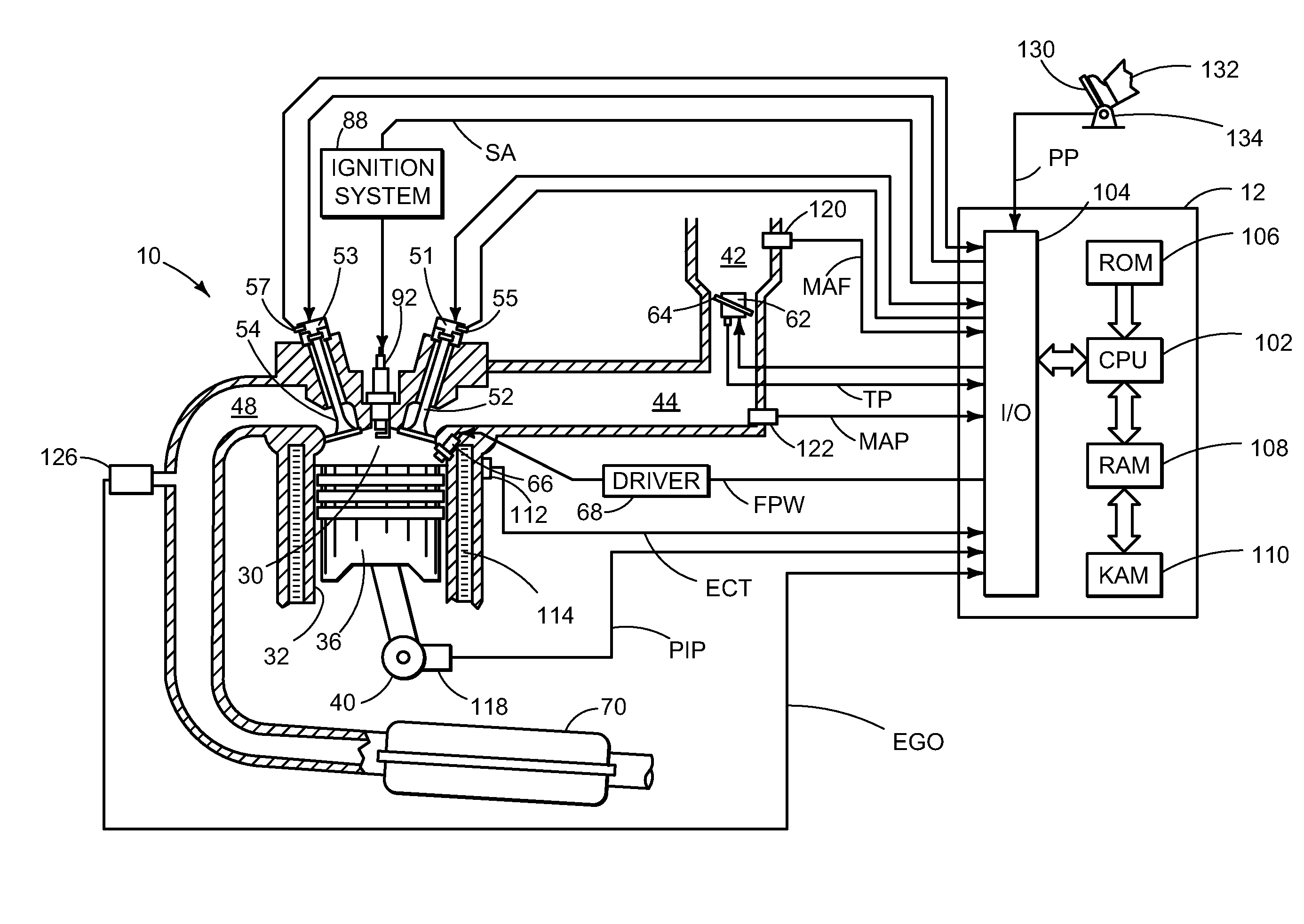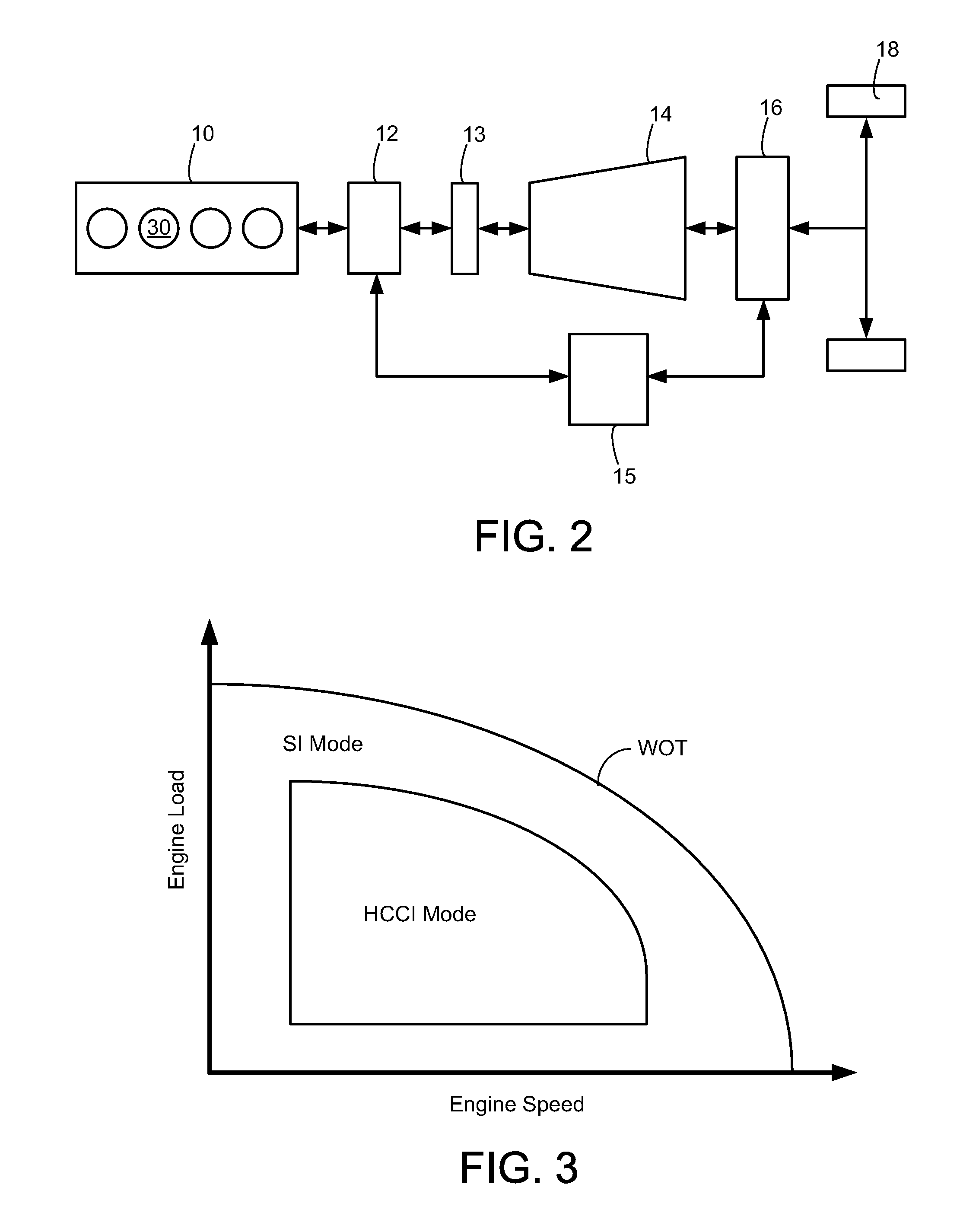Control Strategy for Multi-Mode Vehicle Propulsion System
a technology of vehicle propulsion system and control strategy, which is applied in the direction of electric control, machines/engines, transportation and packaging, etc., can solve the problems of increasing rapid change in the torque produced by the engine and/or motor, and increased noise and vibration harshness (nvh) or “clunk” may occur, so as to improve the likelihood of clunk, and improve the drivability and performan
- Summary
- Abstract
- Description
- Claims
- Application Information
AI Technical Summary
Benefits of technology
Problems solved by technology
Method used
Image
Examples
Embodiment Construction
[0011]Referring now to FIGS. 1 and 2, a propulsion system for a vehicle is described. FIG. 2 illustrates a hybrid propulsion system including one or more of an internal combustion engine 10 having one or more cylinders 30, a transmission 14, a drive wheel 18, and one or more motors 12 and / or 16. In some embodiments, the driveline may include a torque converter 13 arranged between the engine and the transmission. Motors 12 and / or 16 may be powered by an energy storage device 15 or may transmit energy to device 15 where it may be stored for later use. As will be described in greater detail, these components may be controlled to enable the vehicle to be propelled by at least one of the engine or motor. While FIG. 2 illustrates two separate motors 12 and 16, it should be appreciated that one or more of these motors may not be included in some embodiments of the propulsion system as will be described below in greater detail.
[0012]Torque converter 13 may be coupled to the engine and / or mo...
PUM
 Login to View More
Login to View More Abstract
Description
Claims
Application Information
 Login to View More
Login to View More - R&D
- Intellectual Property
- Life Sciences
- Materials
- Tech Scout
- Unparalleled Data Quality
- Higher Quality Content
- 60% Fewer Hallucinations
Browse by: Latest US Patents, China's latest patents, Technical Efficacy Thesaurus, Application Domain, Technology Topic, Popular Technical Reports.
© 2025 PatSnap. All rights reserved.Legal|Privacy policy|Modern Slavery Act Transparency Statement|Sitemap|About US| Contact US: help@patsnap.com



